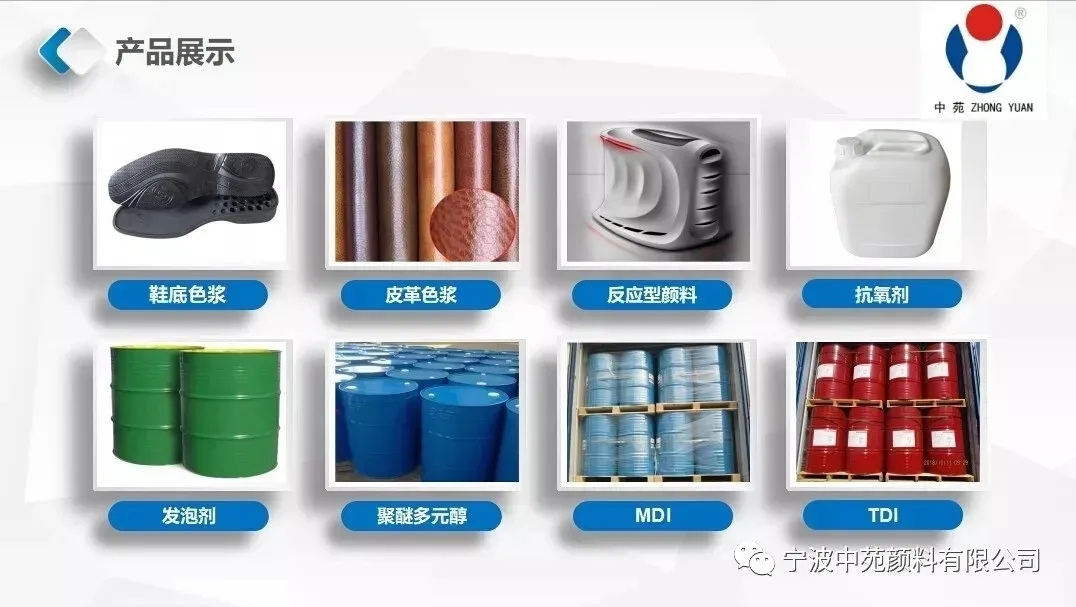
Color paste, as the main auxiliary agent used in polyurethane foaming, is widely used in various polyurethane materials. Our factory, as a professional polyurethane color paste manufacturer in East China, produces color pastes with high color density, good fluidity, large additions without affecting foaming, bright colors, and strong weather resistance.......

Since the production of polyurethane is actually a process controlled by chemical reactions, its reaction rate is very important. Different products, different processes and different formulas have different requirements on the reaction rate. Taking a reasonable response rate to meet the needs has an important role in ensuring and improving product quality and quality.
Since the production of polyurethane is actually a process controlled by chemical reactions, its reaction rate is very important. Different products, different processes and different formulas have different requirements on the reaction rate. Taking a reasonable response rate to meet the needs has an important role in ensuring and improving product quality and quality. Based on my personal work experience, I would like to share with you and have a friendly discussion together. I briefly talk about the factors that affect the reaction rate in polyurethane production.
1. Ratio of OH and NCO
When the ratio of OH and NCO is closer to 1:1, the faster the reaction rate. When NCO:OH is greater than or less than 1:1, the reaction rate slows down. When NCO:OH>1:1, it will increase the physical properties of the product such as hardness, thermal stability, elasticity, mechanical strength, etc., but reduce the elongation and tensile strength, and affect the storage period of some liquid polyurethane products. When NCO:OH<1:1, it will improve the soft feel, elongation and peel strength of the product, but will reduce some physical properties such as hardness and wear resistance.
In addition, the reactivity of isocyanate and hydroxyl compounds is also affected by their molecular structure. The reactivity of various types of hydroxyl compounds is: primary hydroxyl>secondary hydroxyl>tertiary hydroxyl.
2. Raw material pH
For polyurethane reaction, the pH value of the raw material will affect the reactivity with isocyanate. As far as polyether polyol and polyester polyol raw materials are concerned, the acid value is the amount of residual terminal carboxyl groups. It reacts with isocyanate to form an amide and release carbon dioxide, which not only causes chain termination, but also easily forms bubbles. The acid has an adverse effect on the reaction catalysis at the same time, and reduces the hydrolysis resistance of the product. Reasonably keeping the reaction system weakly alkaline is conducive to the smooth progress of the reaction. Too high a base value will cause the reaction rate to be poorly controlled, seriously affecting production progress and product quality.
3. Catalyst
As far as catalysts of the same type are concerned, adding a reasonable amount of catalyst will help control a reasonable reaction rate. Excessive catalyst will also sacrifice the quality of the product. Some organotin catalysts will affect the hydrolysis resistance of the product.
4. Moisture
Although many polyurethane formulations have added water, it does not mean that water is the raw material that must be used in the production of polyurethane. But for polyurethane reaction, the moisture content of the mixture in the reaction system must be strictly controlled. Because as the amount of water increases, the reaction rate will increase. Especially in the presence of a catalyst, the reaction of isocyanate and water can be accelerated. Although the reactivity of water with isocyanate is lower than the primary hydroxyl group, it is equivalent to the secondary hydroxyl group. In the production of polyurethane products other than polyurethane foam, water must be strictly controlled, because the reaction of water with isocyanate will generate unstable carbamic acid, which is easily decomposed into carbon dioxide and amine. In addition, in the prepolymer, moisture will also reduce the content of NCO in the prepolymer.
Five, functional group
The larger the functional group, the faster the reaction rate and the higher the viscosity of the material.
6. Molecular weight
When the functional groups and other conditions are the same, the smaller the molecular weight, the higher the reactivity.
Seven, diol and diamine
The reaction rate of diol and diamine is very different, and the activity of diol is much lower than that of diamine. In particular, the reaction of aliphatic primary amines with isocyanates is particularly fast, and it is generally difficult to control, so aromatic diamines with relatively low activities are commonly used.
8. Temperature
In general, the higher the reaction temperature, the higher the reaction rate. But in practice, the reaction temperature of polyurethane is controlled between 60-100 ℃. Because it exceeds 130 ℃, especially the linear molecular chain reaction is prone to undesirable problems, causing branching and crosslinking, and affecting the regularity between molecules. Below 60 ℃, the reaction rate is very slow, and the reaction is unfavorable.
9. Others
The greater the polarity of the solvent, the slower the reaction rate, and vice versa; the lower the solids content, the smaller the reaction rate, and vice versa; the higher the viscosity of the material, the slower the reaction rate; the faster the stirring rate, the faster the reaction; the hardness (mold The higher the amount), the faster the reaction rate;
![]()
![]()
We respect originality. The text picture material, the copyright belongs to the original author. Some articles could not be contacted with the original author due to various reasons. If the copyright issue is involved, please contact the original author to deal with it immediately.

Factory address: Longzhen Avenue, Longshan Industrial Zone, Cixi, Ningbo
Marketing Center: 1308 Yaojiang Xindu, Hongtang Street, Jiangbei, Ningbo
Phone: +860574-86501282-0
83096225 83096226
Fax: +860574-86501283
Website: http://zy-pigment.en.alibaba.com/